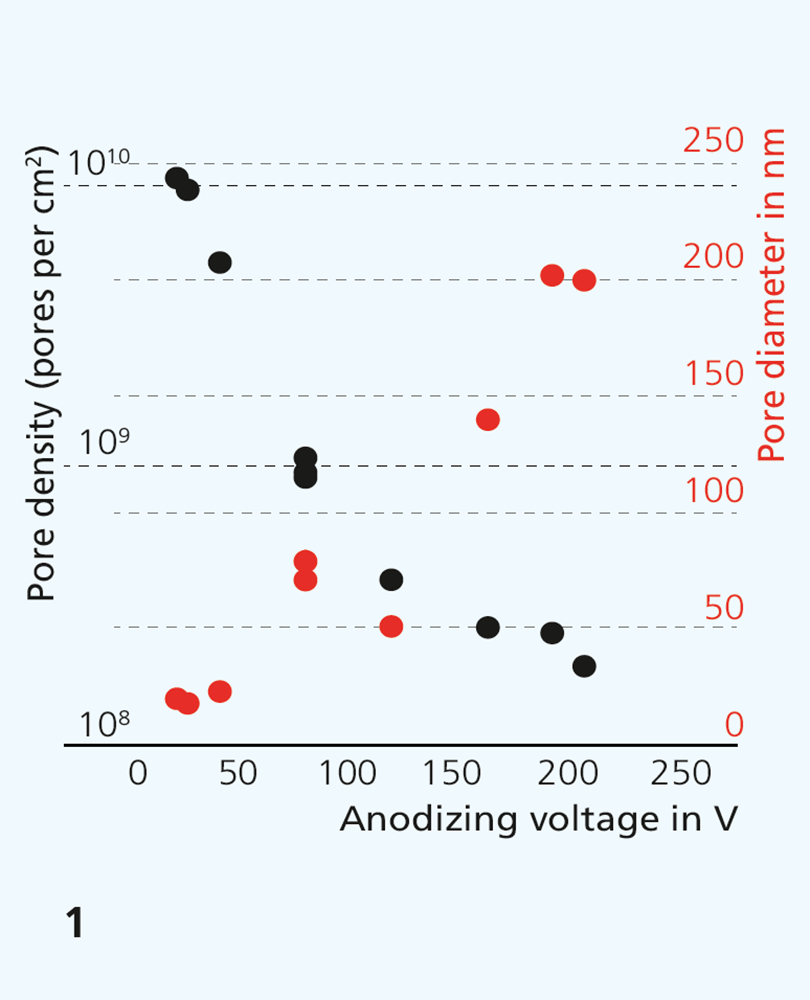
Electrochemical fabrication of nanoporous aluminum oxide mebranes
Current research



In recent times, the pollution of oceans with microplastics has been coming into public awareness. Microplastics find their way into wastewater and soil due to the abrasion of fibers while washing clothes or the use of cosmetics and cleaning products. The cost-efficient removal of microplastics during wastewater treatment requires suitable filter materials.
Cost-efficient and scalable processes are being developed at Fraunhofer IKTS using electrochemical technologies to produce tailor-made aluminum oxide membranes. Beside the application in sensor technologies, catalysis, energy storage and medicine, nanoporous aluminum oxide can be used as a membrane to separate microplastics from fluids.
Via anodizing, an aluminum substrate is electrochemically oxidized and forms a nanoporous oxide layer. Subsequently, the oxide layer thus formed is separated from the substrate by using a cathodic voltage pulse, which is applied only for a few seconds. The remaining aluminum substrate can be directly reused, which allows a quasi-continuous production process (right-hand graph). The pore size (10 to 400 nm), the number of pores (102 to 103 pores/cm2) and the thickness of the membranes (0.1 to 600 µm) (Figures 1 and 2) can be modified through specific variation of the anodizing parameters. Targeted current-voltage modulation makes it possibly to vary the pore design, from straight aligned pores right up to periodic 3D structures. The range of available parameter combinations allows to adapt the membranes to the specific requirements of the elimination of microplastics. The entire fabrication process of the membranes does not require any toxic or environmentally hazardous chemicals.
The membrane thus obtained can be additionally modified to suit the desired application. For example, wider pore sizes can be achieved through chemical etching and mechanical stability can be improved by means of heat treatment. With the aid of suitable aluminum substrates, the fabrication can be realized in near-net shape, which reduces subsequent finishing steps.



